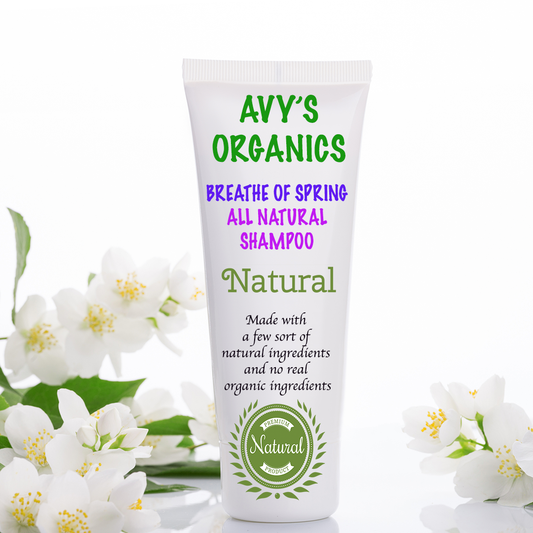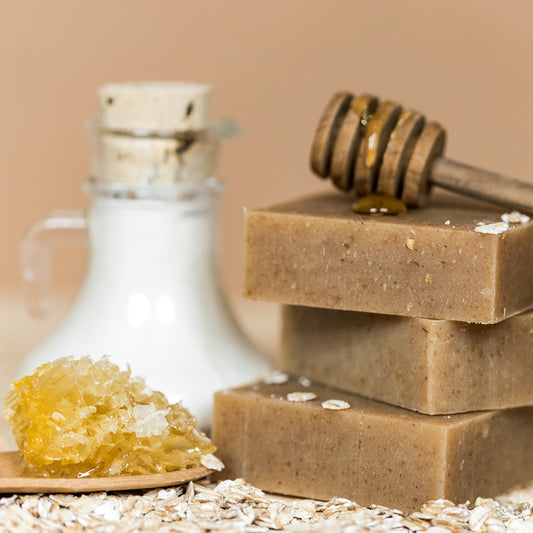Skin: The Largest Organ of The Human Body
Human skin is a remarkable, complex, and dynamic organ. If you were to lay it flat, it would cover an area of about 21 square feet and weigh 8-10 pounds.
Skin thickness varies significantly depending on its location on the body. On average, human skin measures approximately 1.5 millimeters. However, this can range from a mere 0.5 millimeters in delicate areas like the eyelids, to a robust 6 millimeters in more resilient areas, such as the soles of the feet.

Just one square inch contains approximately:
- 19 million cells
- 65 hairs
- 100 sebaceous glands
- 650 sweat glands
- 78 yards of nerves
- 19 yards of blood vessels
- 1,300 nerve endings
Our skin works to renew itself every second of every day as we shed some 40 pounds of dead skin cells in the course of our lifetime. An average adult typically sheds around 500 million skin cells each day.
While these numbers vary from website to website, you get the picture. Our skin is an incredible, intricate organ that deserves a lot of TLC.
Our skin is a remarkable barrier, shielding us from environmental hazards while expertly regulating our internal temperature. At the same time, it allows us to experience the world around us, transmitting sensations of pain and pleasure through its intricate network of nerve endings.
But its role goes far beyond protection and sensation. The skin is an extremely active structure, serving as both the source and target of several hormones. It boasts its own immune system, functions as our largest sensory organ, and performs many other vital functions. In short, without this incredible organ, human life as we know it would not be possible.
Functions of the Skin
Every single day of our lives, our skin acts as a shield between us and the outside world.

Our skin is our first line of defense against the outdoor elements, like air pollution, as well as other chemicals that touch our skin in laundry detergents, personal care products, and even swimming pools.
Some functions of the skin include:
- protects against pathogens (germs)
- prevents excessive water loss from our body
- insulates us from heat and cold
- aids in temperature regulation
- provides a protective barrier against mechanical, thermal and physical injury and hazardous substances
- prevents loss of moisture
- produces vitamin D
- acts as a sensory organ (touch, heat, cold and pain)
- provides an airtight, watertight and flexible barrier between the outside world and the highly regulated systems inside the body
And along with all of those awesome things it does, our skin is so sensitive that we can feel the weight of a fly.
The Skin Has Three Main Layers
These three layers are well defined but work together to allow the skin to function effectively.
 Epidermis: This is the outermost layer of your skin.
Epidermis: This is the outermost layer of your skin.
The epidermis is the thinnest layer of skin. It protects you from the outside world by acting as a barrier against foreign substances. The epidermis prevents bacteria and viruses from entering the deeper layers of the skin.
The epidermis continually makes new skin cells needed to replace the approximately 30,000 to 40,000 old skin cells that your body sheds every minute.
Since new skin cells last for about a month before they fall off, you actually have new skin about every 30 days, depending on your age. The epidermis also contains melanin, the pigment that gives skin its color.
The outermost parts of the epidermis consist of 18 to 30 thin layers of dead cells which prevent water loss from the skin.
Dermis: The middle layer of skin, the dermis, lies beneath the epidermis, makes up 90% of skin’s thickness and has many functions.
- Contains collagen and elastin for skin strength and flexibility
- Contains the roots of hair follicles
- Contains the nerves that help you feel pain and tell you when something is hot, itchy or super soft.
- Contains oil glands that help keep the skin soft and smooth. Contains
- Contains the sweat glands which help regulate your body temperature.
- Contains blood vessels that provide nutrients to the epidermis, keeping the skin layers healthy.
Hypodermis (Subcutaneous Layer): The bottom fatty layer of skin. The thickness of this layer varies dramatically depending on the site and the body shape, and the weight of the person. This fatty layer:
- cushions the body from external trauma, which helps protect muscles and bones from injuries
- insulates from the cold
- stores energy (fat)
- contains connective tissue that connects layers of skin to muscles and bones.
- contains larger blood vessels and nerves and helps regulate body and skin temperature.
What Is The Skin Barrier?
While the skin is made up of the three main layers described above, each of these layers has several sublayers, most of which perform unique, specialized functions. For any discussion about skin care, the focus is really on the epidermis.
 The epidermis is actually subdivided into five layers. The outermost layer, called the stratum corneum, functions as the physical protective barrier.
The epidermis is actually subdivided into five layers. The outermost layer, called the stratum corneum, functions as the physical protective barrier.
The structure of the stratum corneum is like a brick wall in which the actual skin cells are the bricks and everything else is the cement that fills in between the bricks and holds it all together.
Since this "cement" is made up of fats and other essential nutrients, it is referred to as the "lipid layer or lipid barrier"
Your "skin barrier" is the outer surface of your skin made up of the Lipid Layer plus the Acid Mantle and the Microbiome.
The Acid Mantle: This is a very thin, slightly acidic, moist layer caused by normal secretions from sweat glands and sebaceous (oil) glands, dead skin cells, the breakdown of fatty acids by good bacteria that live on our skin and other skin secretions. The acidic pH allows beneficial bacteria to live happily on our skin while it deters bad bacteria.
The Microbiome: It is estimated that our skin is home to about 1 trillion beneficial microorganisms (skin flora) which make up a tiny ecosystem called the skin microbiome. Although science is just starting to understand everything the skin microbiome does, we know that it is an essential part of the body’s immune system. Similar to those in our gut, our skin microorganisms have key roles in the protection against infection.
Debunking the "Skin is a Sponge" Myth
One of the ongoing controversies is the effect of synthetic chemicals in personal care products on our skin and our bodies.
You may see comments like, "Our skin can absorb up to 60-75 percent of what we apply to it." Is that really true? The answer is, No! However, it is a great selling point for businesses that manufacture skin care products with only natural ingredients.
While our skin does have some absorptive properties, the analogy of skin as a sponge is oversimplified.
It would be great if I could absorb enough calcium into these old bones by simply taking a bath in milk--but it can't happen--the calcium molecules are too large.
To understand how our skin interacts with chemicals, we need to distinguish between two key concepts: Penetration and Absorption.

Penetration occurs when a chemical passes through the stratum corneum, the outermost layer of skin, and reaches the deeper layers. However, this does not mean the chemical will enter the bloodstream.
Absorption, on the other hand, happens when a chemical is small enough to pass through the skin's layers and into the bloodstream. Transdermal patches, which deliver medication through the skin, rely on this principle.
So, while olive oil only penetrates the skin, the drugs in a transdermal nicotine patch are absorbed into the bloodstream.
When it comes to synthetic chemicals in soap, detergents, body creams, and other skincare products, the question remains: do they merely penetrate the skin or are they absorbed into the bloodstream? Currently, there is no definitive answer.
Research suggests that some synthetic chemicals, like phthalates, can be absorbed into the bloodstream. A 2019 study in Environment International found that phthalates were present in blood and urine tests, indicating absorption. The main culprits were face and hand creams, anti-aging creams, body wash, shower gel, toothpaste, and shaving cream.
However, a significant knowledge gap remains regarding the absorption rates of many chemicals and the long-term effects of daily exposure. Human skin is complex, and individual differences in skin composition make accurate research challenging.
What is most concerning is the uncertainty. Our skin cannot distinguish between synthetic and natural substances, nor between harmful and beneficial chemicals. This lack of understanding raises important questions about the risks of prolonged exposure to synthetic ingredients in skincare.
Whether or not these chemicals are linked to serious health issues, it is that “unknown” factor that worries me the most.
So, Why Are We Discussing Skin?
Chagrin Valley Soap & Salve creates natural, organic soap, shampoo, and personal care products—because we believe what you put on your skin matters.
Our company was born from a deep concern about the synthetic chemicals found in conventional personal care products and their potential impact on our health, our children, and our planet.
We believe synthetic chemicals are not necessary. Mother Earth provides us with everything we need to craft high-quality, effective soaps, salves, and skincare products.
For us, it all comes down to ingredients. Our products always have—and always will—contain only natural, wholesome ingredients.
No artificial additives. No synthetic chemicals. No GMOs. Just pure, nature-derived ingredients you can trust.

Why We Believe In Natural, Organic Skin Care
What is pH Balanced Skin Care?
Why We Became a Certified Organic Company
But . . . The Label Says "Natural" (Misleading Labels)


